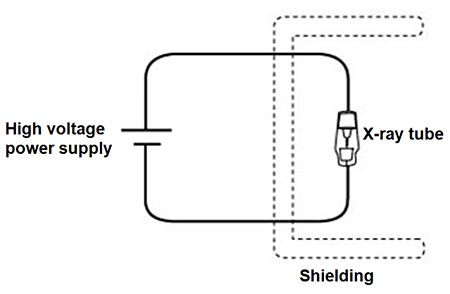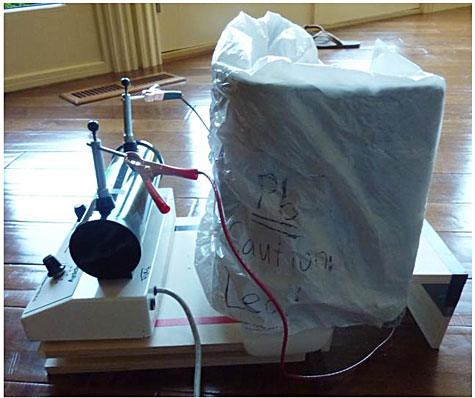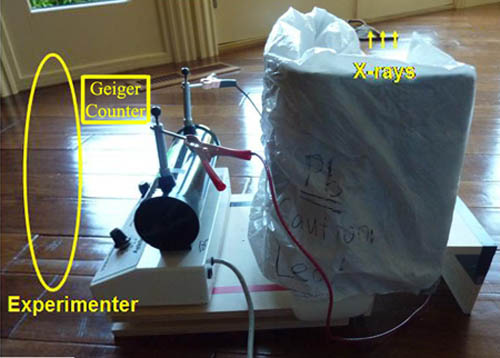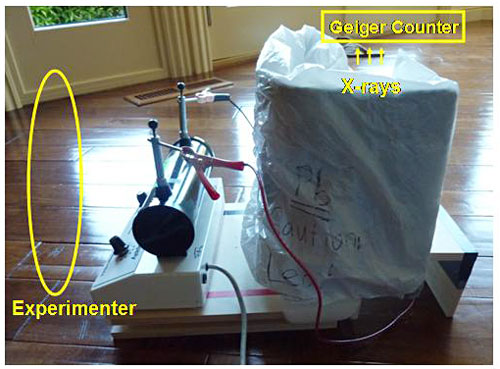Glass-lined
steel equipment is used in a wide range of chemical processes that
involve harsh chemicals, including the production of pharmaceuticals,
specialty chemicals, agricultural products and polymers. One of the
reasons for the attraction is that glass is resistant to attack from
most chemicals and to mixtures of corrosive materials. In addition, it
has a smooth, anti-stick surface, is easy to clean, and does not
introduce impurities to the process materials.
The
metals that compete with glass for corrosion resistance are tantalum,
titanium and zirconium, all of which are several times more expensive
than glass-lined steel. Glass-lined steel can be used with most acid or
alkaline media, since glass withstands attack from most substances in
both oxidizing and reducing environments. The exceptions include
fluorides at any temperature or concentration; hot, concentrated
phosphoric acid; and highly alkaline chemicals at elevated temperatures.
Glass-lined
vessels typically consist of a carbon-steel body with a bonded inner
lining of specially formulated glass. The glass is composed of several
oxides and silicates. It is blended and heated to the melting point,
emptied through a chute, quickly cooled and solidified into particles
called frit. The first coat of glass applied
to the steel is the ground coat; it has limited corrosion resistance
and is used solely to develop a chemical bond with the base metal. After
the ground coat is cooled, the chemically resistant glass is applied.
This procedure is repeated until a desired glass thickness is achieved,
which is usually 40–90 mils.
Equipment
that is often supplied with a glass lining includes reactors, storage
tanks, columns, dryers and filters, as well as pipes, valves and
fittings. The internal components of the vessels, such as agitators,
baffles and dip pipes, are also supplied with glass coatings. In
general, glass-lined vessels are designed to operate at temperatures up
to 500°F (260°C) and pressures of 130–150 psig (9.14–10.55 kg/cm2), although they can be built to withstand much higher pressures.
The
leading cause of problems in the operation of glass-lined equipment is
mechanical damage resulting from impact, and the second is thermal
shock, caused by heating or cooling a vessel too quickly. These and
other problems can be avoided or minimized by proper operation of the
equipment and by educating personnel in the procedures for working with
glass-lined equipment.
The
key to a long, healthy life for glass-lined equipment is an inspection
and maintenance program that is designed for early detection of damage. A
small chip or pinhole, if not repaired immediately, can lead to
corrosion of the steel substrate and could result in major harm to the
equipment. The inspection process starts with a thorough review upon
delivery of the glass-lined equipment to the plant to ensure it was not
damaged in transit. Thereafter, the equipment should be inspected at
regular maintenance intervals ranging from several times a year, to once
every two years, depending on the severity of service. More-frequent or
even continuous testing may be conducted if the operating conditions
are especially severe, or if damage is suspected.
A
typical maintenance checklist for glass-lined equipment should nclude:
visual inspection of the lining; spark testing for signs of glass-lining
failure; glass-thickness readings; inspection of tantalum repair plugs
and patches, if installed; vessel nozzle connections; and vessel jacket
connections. As in conventional equipment, the list should also include
motor and drive performance and the mechanical seal and lubricator (if
applicable).
Spark testing.
Glass linings should be electrically tested after installation and at
regular maintenance intervals in order to detect small defects before
they become more serious problems. A spark test can be performed with
either d.c. or a.c. spark testers, which apply approximately 6,000 V at
very low amperage. In either case, the spark tester consists of a
hand-held brush that is connected via a cable to a portable detector.
The inspector carefully brushes the glass surface, using a semi-circular
motion, until the entire surface has been covered. If the brush
encounters so much as a pinhole, current flows to the steel shell and
arcing occurs.
Incidentally,
d.c. spark testers are the preferred way to check vessel linings
because they are grounded to the steel structure. The a.c. types, which
are connected to a power outlet, are generally used for checking
components that are completely encapsulated in glass, such as agitator
blades, where grounding is not possible.
Also
available are permanent d.c. systems that are installed in a vessel and
monitor the integrity of the glass lining continuously while the vessel
is in service. A conductive glass electrode is mounted on an internal
accessory, such as a flush valve at the bottom of the vessel, and the
other end of the circuit is connected to the outside of the grounded
steel shell. If there is a leak in the glass, a current of a few
milliamps flows between the electrodes via the conductive liquid
contents of the vessel and activates audible and visual alarms. Besides
continuous monitoring, an online system avoids the need for someone to
enter the vessel to conduct an inspection.
Another
option is to use a portable instrument that is based on the same
principle. In this case, the vessel is filled with a conductive liquid,
and a probe is suspended in the liquid on a cable. Although monitoring
is not continuous, the test can be done as often as considered
necessary, and the probe can be used in multiple vessels. With either
system, the approximate location of a leak can be determined by filling
or draining a vessel until the alarm is activated or deactivated.
Monitoring glass thickness.
Another inspection task that is done electrically is measurement of the
glass thickness, a calculation that is critical to the life of a
vessel. It is performed with a handheld magnetic induction or
eddy-current type instrument that comprises a probe on a cable. When the
probe is touched to the surface of the glass, it sends out a current
that is reflected from the steel backing of the vessel. The time taken
to receive the feedback signal indicates the glass thickness with an
accuracy of at least ±5%. This value is displayed on the instrument. To
conduct these tests, the vessel should be mapped in a grid pattern, with
readings taken at intervals of 24 –36 in. (61–91.5 cm).
The
appropriate interval between glass-thickness measurements depends on a
number of factors. If the reactants used in a process are very
aggressive, it may be wise to measure the thickness of the reactor’s
glass lining every three to six months. The frequency of inspections
should increase as the vessel ages. Areas that exhibit a loss of fire
polish (the smooth finish achieved in the glass furnace) should be more
thoroughly inspected and monitored. In particular, agitator blades and
baffles are more likely to show signs of wear and should be tested more
frequently than other areas.
It
is good practice to maintain a logbook for each vessel, indicating the
date of installation and the dates and results of spark tests, visual
inspections and glass-thickness tests. The log will help maintenance
personnel to determine the estimated service life of the equipment and
could help prevent a vessel failure. It is advisable to
call the equipment manufacturer when the thickness of the glass lining
thins to about 0.03 in. (0.08 cm), as it is probably time to take the
vessel back to the factory for reglassing. A reglassed vessel can carry
the same glass -lining warranty as a new vessel.
Before
sending a vessel to the manufacturer for repair and reglassing, it is
necessary to clean the vessel and jacket thoroughly, removing all
chemicals and heat-transfer fluids. Insulation should also be removed,
as well as all accessories not subject to repair or replacement. These
may include the agitation system, clamps, split flanges, pipes, valves
and fittings. Any plugs or patches should also be removed, as product
may have become trapped behind them.
Reglassing,
however, is the remedy of last resort and should not be necessary until
the lining has been worn thin by years of service or has been severely
damaged. Such areas can be repaired economically by means of a plug or
patch made of tantalum, which is used because of its corrosion
resistance. Plugs are designed to repair small holes, up to 4 in. (10
cm) dia., whereas patches are intended for larger areas of damage. Old
repair plugs and patches should be checked during an inspection. Loose
plugs and patches should be replaced, not retightened.
A
tantalum repair plug consists of a stud, nut, disc and a gasket of
polytetrafluoroethylene (PTFE, or Teflon). It can be used to repair
defects by the following procedure:
• Clean the area to be repaired
• Remove the damaged glass
• Choose the appropriate size plug
• Drill and tap to the appropriate dimensions
•
Screw in the stud; ensure that the hole is perpendicular after the plug
is installed; ensure that the gasket is sealed properly
• Apply a cement into the cavity
• Install the PTFE gasket
Upon
drilling a hole, prevent the tip of the drill from slipping over the
glass by turning the chuck by hand and applying pressure, such that the
tip cuts its way through the lining.
Be
sure to mill at slow speed and in short bursts to avoid chipping the
glass around the periphery of the hole. Complete the drilling process by
using a ball mill or conical mill. Prior to installing the patch, a
filler, such as furan or silicate, is injected into the damaged area. In
the case of larger holes, a sheet of tantalum, with a PTFE gasket, is
placed across the damaged area and is fastened into place using tantalum
studs and nuts around its periphery.
This
repair system can also be employed to restore damaged glass around a
nozzle, which is glassed on its interior and on the nozzle face. If the
steel has been damaged, the affected area may be filled with titanium
putty or furan, and a tantalum sleeve may be installed inside the
nozzle. A solution that is less expensive than tantalum for repairing
glass around nozzles is the use of a repair sleeve made of PTFE. In this
approach, titanium putty may be used to fill the damaged area. Then, a
layer of cement is added, and the PTFE sleeve is installed on top of the
cement to form a seal.
There
are many reasons for glass failure in glass-lined steel equipment. Most
may be avoided by following the correct procedures when working with
the equipment. For example, mechanical shock, which accounts for
approximately 75% of all failures, is often the result of human error.
Mechanical shock and chemical attack. A
common cause of glass failure from mechanical shock is objects falling
on or against the outside or inside of a vessel. A sharp blow on the
outside can cause the glass to “pop off,” depending on the severity of
the blow. If mechanical shock is suspected, the vessel must be inspected
immediately and, if necessary, repaired before further use. An impact
directly on the glass will result in crushed glass at the impact point,
with chunks of glass fracturing off around the area.
Entry
into a vessel for inspection or maintenance always creates a potential
for mechanical damage. In addition to taking normal safety precautions, a
mechanic must wear a new or dedicated pair of rubber-soled shoes to
prevent scratching the glass lining, and empty clothing pockets before
entering the vessel. Items such as metal belt buckles or studs in
clothes should be removed to prevent accidental scratching of the glass
in the manway nozzle. Any tools that are needed can be lowered down in a
sturdy cloth or canvas bag once the mechanic is safely inside the
vessel.
Avoid
scratching or tearing the surface of a vessel’s glass lining when
removing residual reaction products. Plastic or wood scrapers — never
metal tools — can be employed, but high-pressure water-jet cleaning is
preferred. Whenever a glass-lined vessel is lifted and moved, it is
important to follow the manufacturer’s recommended procedures for
handling and rigging. The lifting lugs on the equipment are designed to
carry the weight of the vessel and should be used as instructed for
lifting and setting the vessel in place. Shortcuts, such as using
nozzles as lifting lugs, can subject the glass lining to excessive
stress and possible damage.
It
must also be understood that glass is not completely inert and is
always undergoing local chemical reactions at the surface. What allows
glass-lined steel to be used with most corrosive materials is the slow
rate of reaction. Acids, alkalis and even water can corrode glass; the
attack rate is determined by temperature, duration, and the
concentration of reagents.
A
reactor’s glass lining may be eroded by abrasive solids in the
reactants. Abrasion is characterized by a loss of fire polish and, in
severe cases, a rough, sandpaper-like finish. Abrasion combined with
acid corrosion can result in severe glass-lining failure, as abrasion
weakens the silica structure, which accelerates the rate of acid corrosion.
Thermal shock.
Glass-lined vessels are made by bonding a layer of glass to steel, as
noted earlier. Since steel and glass have different coefficients of
thermal expansion, glass-lining failure can result from abrupt changes
in the temperature of the glass, causing small, but thick, pieces of
glass to fracture off the steel substrate. In most cases, the steel will
be exposed. Unlike failure from mechanical shock, thermal shock usually
damages the glass lining in large areas (Figure 6). Consequently,
repairs with tantalum plugs or patches are often not practical and the
vessel must be completely reglassed. The basis for thermal shock is as
follows:
The
glass lining is sprayed on the prepared steel, and then moved into the
furnace to “fuse” the glass and steel together, via mechanical and
chemical adherence. Glass is fused onto steel at approximately 1,600°F
(870°C), at which temperature the steel is comparatively ductile and the
glass is an amorphous, viscous mass. The glass solidifies at around
600°F (320°C). This is the null point — a temperature at which the glass
is under neither compression nor tension. When the glass lining cools
to ambient temperature, it is under a residual compressive stress, which
greatly strengthens the glass and makes it resistant to thermal and
mechanical shock. However, excessive compression in glass increases the
tendency of convex glass surfaces, such as outside radii or vessel
nozzles, to spall.
If
glass-lined steel is heated close to the null point, the risk of damage
is great because the glass starts to lose its compressive strength.
Abrupt temperature changes induce abrupt changes in the lining’s
compressive strength and, potentially, thermal shock — a potential that
increases at higher temperatures, where the residual compressive stress
is lower. Thus, the temperature differential required to cause thermal
shock will decrease as the glass temperature increases.
For
example, and as illustrated in Figure 7, if the temperature of the
vessel wall is 302°F (150°C), then the coldest reagent introduced into
the vessel should have a temperature of 32°F (0°C), a differential of
270°F (132°C). If the vessel wall is at 410°F (210°C), the temperature
of the coldest reagent should not be less than 194°F (90°C), a
differential of 216°F (102°C).
Four situations in which sudden temperature variations can cause thermal shock are when:
• Cooling a hot glass surface using a cold liquid
• Heating a cold glass surface using a hot liquid
• Heating a cold, jacketed vessel by rapidly circulating a very hot fluid through the jacket
• Cooling a hot vessel wall by rapidly circulating a cold fluid through the vessel jacket
Thermal
stress. Another cause of failure in glass-lined equipment is thermal
stress. Failure due to thermal stress, in contrast to thermal shock, is
caused by differential heating or cooling that is not instantaneous in
nature. Thermal stress may occur at areas of high stress concentration,
such as on the vessel wall just below the top-jacket closure ring, or in
the area where the bottom-jacket closure ring is welded to the vessel.
In either case, the cause is that the area inside the jacket is heated
or cooled, while the unjacketed area is not.
Preventing vessel failure
Proper operating procedures.
Both thermal shock and thermal stress are strictly operational problems
that can be easily avoided by following the equipment manufacturer’s
recommendations. Before setting process procedures that involve thermal
variations, it is important to measure (or closely approximate) the
temperature of the glass lining, and to check possible local hotspots.
Also, one should consult the manufacturer’s chart of maximum
safe-temperature differentials and adhere to it strictly. To avoid
thermal shock due to a runaway exothermic reaction, a quick-response
temperature sensor may be installed in a baffle, bottom outlet valve or
thermowell to warn the operator of dangerous temperature increases.
Thermal
stress may be reduced by careful control of heating and cooling
operations, such as by gradually raising or lowering temperatures in the
jacket to minimize thermal gradients. It is also common to insulate
unjacketed areas. In addition, the strapping or restraining of a
jacketed vessel during heating could impede the jacket’s free expansion
and result in overstressing near the closure rings.
Nozzles
on glass-lined vessels cannot be treated like those on unlined vessels.
Two common nozzle-related causes of glass damage are excessive
tightening of flange bolts or clamps and bending stress caused by
piping. Tables 1–3 (p. 59 and p. 61) list the recommended torques for
bolts, which are usually used with nozzle diameters up to 12 in., and
clamps, which are used with larger nozzles. Excessive torque can also
fracture the glass on a glass-lined agitator. In this case, excessive
torque occurs when an operator tries to start the agitator in a very
viscous or solid mass, or if, during an operation, the vessel’s contents
begin to thicken or solidify beyond design conditions. This problem may
be avoided by installing a variable-frequency inverter or motor
soft-start between the motor and the gear drive.
Jacket care. Jackets of glass-lined steel reactors are subject to internal fouling, due to a buildup of deposits
and iron-oxide corrosion from repeated heating and cooling cycles. Over
time, fouling reduces heat-transfer efficiency and increases reaction
times, thereby decreasing yields by as much as 15%.
Periodic
inspection and cleaning will minimize these problems and extend the
life of a vessel. Cleaning compounds are available that remove
iron-oxide buildup without damaging the glass lining or dissolving the
base metal of a reactor. Mild fouling, especially due to the circulation
of brine solutions for cooling, can be cleaned with a 15% solution of
sodium hypochlorite. Acid-based cleaning solutions are not recommended
because, over time, the acid reacts with the steel.
In
cold climates, special precautions must be taken to protect glass-lined
equipment that is used for outdoor storage or in areas that are not
heated. In locations where temperatures fall below freezing, jackets
must be drained and plugged to prevent water entry. Where complete
drainage is not possible, anti-freeze, such as ethylene glycol, should
be added to the jacket. If a split-pipe coil (or hemicoil) vessel is
being used, all coils must be completely drained.
Acid
spillage on the outside of a vessel causes major damage. Eventually,
the acid reacts with the steel to form hydrogen, which is known as
nascent hydrogen. The hydrogen atoms permeate the steel behind the glass
lining until the pressure in the steel is high enough to disrupt the
glass-to-steel bond and cause the glass to spall. This type of failure
requires a complete reglassing of the vessel. The obvious solution is to
avoid spillage, but in the event of an accident, the acid should be
immediately neutralized and the exterior of the vessel should be
thoroughly washed with water. As a preventative measure, the top head of
a vessel may be shielded with metal or other material.
In
summary, problems with glass-lined equipment can be avoided by keeping
in mind the special characteristics and limitations of the equipment and
by strictly adhering to a proper care and inspection program.







